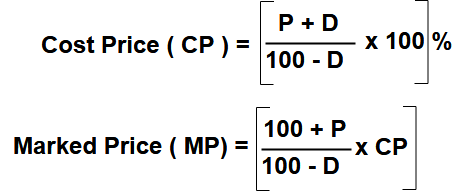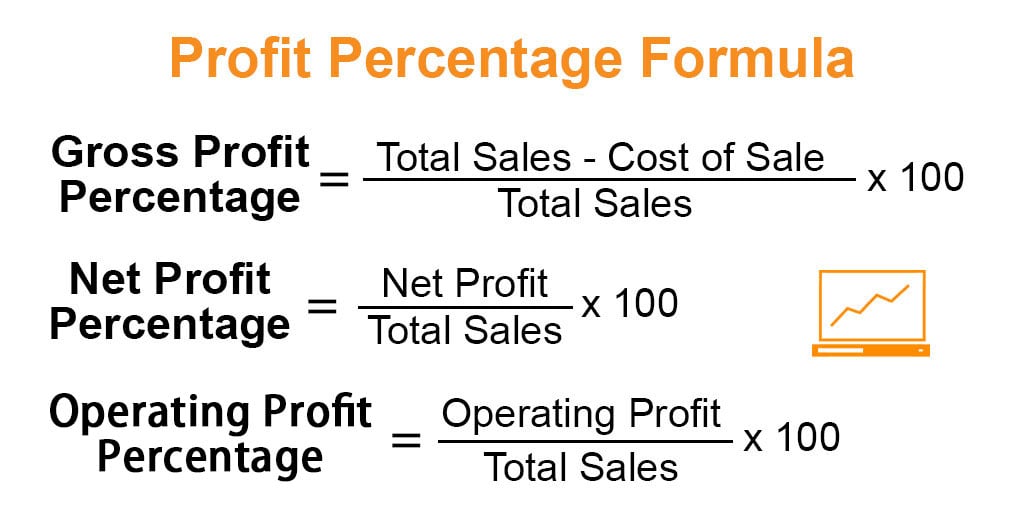Competitive short tricks formula,The main purpose of providing this formula clear the concept about the question and time saving with the trike formula. this formula is used in different types of question solved such as reasoning & aptitude section, work &time question trains formula is here.Basically more competitive exams some question is asking in the formula based therefore this section is all the book formula is summarized in one frame so many Quires is clear after the read is the section before Attempt the question.
All formula list is below the section :
Competitive short tricks formula
| 1. | Sum of first n natural numbers | n(n+1)/2 |
| 2. | Sum of the squares of first n natural numbers | n(n+1)(2n+1)/6 |
| 3. | Sum of the cubes of first n natural numbers | [n(n+1)/2]2 |
| 4. | Sum of first n natural odd numbers | N2 |
| 5. | Average | (Sum of items)/Number of items |
| Sr.No | Tests of Divisibility |
| 1. | A number is divisible by 2 if it is an even number. |
| 2. | .A number is divisible by 3 if the sum of the digits is divisible by |
| 3. | A number is divisible by 4 if the number formed by the last two digits is divisible by |
| 4. | A number is divisible by 5 if the units digit is either 5 or 0. |
| 5. | A number is divisible by 6 if the number is divisible by both 2 and 3. |
| 6. | A number is divisible by 8 if the number formed by the last three digits is divisible by 8. |
| 7. | A number is divisible by 9 if the sum of the digits is divisible by 9. |
| 8. | A number is divisible by 10 if the units digit is 0. |
| 9. | A number is divisible by 11 if the difference of the sum of its digits at odd places and the sum of its digits at even places, is divisible by 11. |
H.C.F and L.C.M
| H.C.F stands for Highest Common Factor. The other names for H.C.F are Greatest Common Divisor (G.C.D) and Greatest Common Measure (G.C.M). The H.C.F. of two or more numbers is the greatest number that divides each one of them exactly. The least number which is exactly divisible by each one of the given numbers is called their L.C.M. Two numbers are said to be co-prime if their H.C.F. is 1. H.C.F. of fractions = H.C.F. of numerators/L.C.M of denominators L.C.M. of fractions = G.C.D. of numerators/H.C.F of denominators Product of two numbers = Product of their H.C.F. and L.C.M. |
| Sr.No | PERCENTAGES |
| 1. | If A is R% more than B, then B is less than A by R / (100+R) * 100 |
| 2. | If A is R% less than B, then B is more than A by R / (100-R) * 100 |
| 3. | If the price of a commodity increases by R%, then reduction in consumption not to increase the expenditure is : R/(100+R)*100 |
| 4. | If the price of a commodity decreases by R%, then the increase in consumption, not to decrease the expenditure is : R/(100-R)*100 |
| Sr.No | PROFIT & LOSS |
| 1. | Gain = Selling Price(S.P.) – Cost Price(C.P) |
| 2. | Loss = C.P. – S.P. |
| 3. | Gain % = Gain * 100 / C.P. |
| 4. | Loss % = Loss * 100 / C.P. |
| 6. | S.P. = (100+Gain%)/100*C.P. |
| 7. | S.P. = (100-Loss%)/100*C.P. |
| Sr.No | RATIO & PROPORTIONS |
| 1. | The ratio a : b represents a fraction a/b. a is called antecedent and b is called consequent. |
| 2. | The equality of two different ratios is called proportion. |
| 3. | If a : b = c : d then a, b, c, d are in proportion. This is represented by a : b :: c : d. |
| 4. | In a : b = c : d, then we have a* d = b * c. |
| 5. | If a/b = c/d then ( a + b ) / ( a – b ) = ( d + c ) / ( d – c ). |
| Sr.No | TIME & WORK |
| 1. | If A can do a piece of work in n days, then A’s 1 day’s work = 1/n |
| 2. | If A and B work together for n days, then (A+B)’s 1 days’s work = 1/n |
| 3. | If A is twice as good workman as B, then ratio of work done by A and B = 2:1 |
| Sr.No | PIPES & CISTERNS |
| 1. | If a pipe can fill a tank in x hours, then part of tank filled in one hour = 1/x |
| 2. | If a pipe can empty a full tank in y hours, then part emptied in one hour = 1/y |
| 3. | If a pipe can fill a tank in x hours, and another pipe can empty the full tank in y hours, then on opening both the pipes, |
| 4. | the net part filled in 1 hour = (1/x-1/y) if y>x |
| 5. | the net part emptied in 1 hour = (1/y-1/x) if x>y |
| Sr.No | TIME & DISTANCE |
| 1. | Distance = Speed * Time |
| 2. | 1 km/hr = 5/18 m/sec |
| 3. | 1 m/sec = 18/5 km/hr |
| 4. | Suppose a man covers a certain distance at x kmph and an equal distance at y kmph. Then, the average speed during the whole journey is 2xy/(x+y) kmph. |
| Sr,No | PROBLEMS ON TRAINS |
| 1. | Time taken by a train x metres long in passing a signal post or a pole or a standing man is equal to t he time taken by the train to cover x metres. |
| 2. | Time taken by a train x metres long in passing a stationary object of length y metres is equal to the time taken by the train to cover x+y metres. |
| 3 | Suppose two trains are moving in the same direction at u kmph and v kmph such that u>v, then their relative speed = u-v kmph. |
| 4. | If two trains of length x km and y km are moving in the same direction at u kmph and v kmph, where u>v, then time taken by the faster train to cross the slower train = (x+y)/(u-v) hours. |
| 5. | Suppose two trains are moving in opposite directions at u kmph and v kmph. Then, their relative speed = (u+v) kmph. |
| 6. | If two trains of length x km and y km are moving in the opposite directions at u kmph and v kmph, then time taken by the trains to cross each other = (x+y)/(u+v)hours. |
| 7. | 7.If two trains start at the same time from two points A and B towards each other and after crossing they take a and b hours in reaching B and A respectively, then A’s speed : B’s speed = (vb : v |
| 1.Simple Interest | (P*N*R)/100 |
| 2.Compound Interest | P(1 + R/100)N – P |
| 3.Amount | Principal + Interest |
| Sr.No | LOGARITHMS |
| 1. | log xx = 1 |
| 2. | log x1 = 0 |
| 3. | log a(xy) = log ax + log ay |
| 4. | log a(x/y) = log ax – log ay |
| 5. | log ax = 1/log xa |
| 6. | log a(xp) = p(log ax) |
| 7. | log ax = log bx/log ba |
| 8. | Logarithms for base 1 does not exist. |
| VOLUME & SURFACE AREA |
| Cube : Let a be the length of each edge. Then |
| 1.Volume of the cube = a^3 cubic units |
| 2.Surface Area = 6a^2 square units |
| 3.Diagonal = v^ 3 a units |
| Cuboid : Let l be the length, b be the breadth and h be the height of a cuboid. |
| 1.Volume = lbh cu units |
| 2.Surface Area = 2(lb+bh+lh) sq units |
| 3.Diagonal = (l2+b2+h2) |
| Cylinder : Let radius of the base be r and height of the cylinder be h. Then, |
| 1.Volume = r^2h cu units |
| 2.Curved Surface Area = 2 rh sq units |
| 3.Total Surface Area = 2 rh + 2? r^2 sq units |
| Cone : Let r be the radius of base, h be the height, and l be the slant height of the cone. Then, |
| 1.Volume = 1/3( r^2h) cu units |
| 2.Curved Surface Area = rl sq units |
| 3.Total Surface Area = rl + r^2 sq units |
| Sphere : Let r be the radius of the sphere. Then, |
| 1.Volume = (4/3) r^3 cu units |
| 2.Surface Area = 4 r^2 sq units |
| Hemi-sphere : Let r be the radius of the hemi-sphere. Then, |
| 2.Curved Surface Area = 2 r^2 sq units |
| 3.Total Surface Area = 3 r^2 sq units |
| AREA & PERIMETER |
| Shape Area Perimeter |
| Rectangle length*breadth 2(length+breadth) |
| 1.Area of a triangle = 1/2*Base*Height or |
| 2.Area of a triangle = v (s(s-a(s-b)(s-c)) where a,b,c are the lengths of the sides and s = (a+b+c)/2 |
| 3.Area of a parallelogram = Base * Height |
| 4.Area of a rhombus = 1/2(Product of diagonals) |
| 5.Area of a trapezium = 1/2(Sum of parallel sides)(distance between the parallel sides) |
| 6.Area of a quadrilateral = 1/2(diagonal)(Sum of sides) |
| 7.Area of a regular hexagon = 6(v3/4)(side)2 |
| 8.Area of a ring = ?(R2-r2) where R and r are the outer and inner radii of the ring. |
 |  |
 |  |
  |  |
 |  |
 | |
 | |
 |  |
 |  |
 |  |